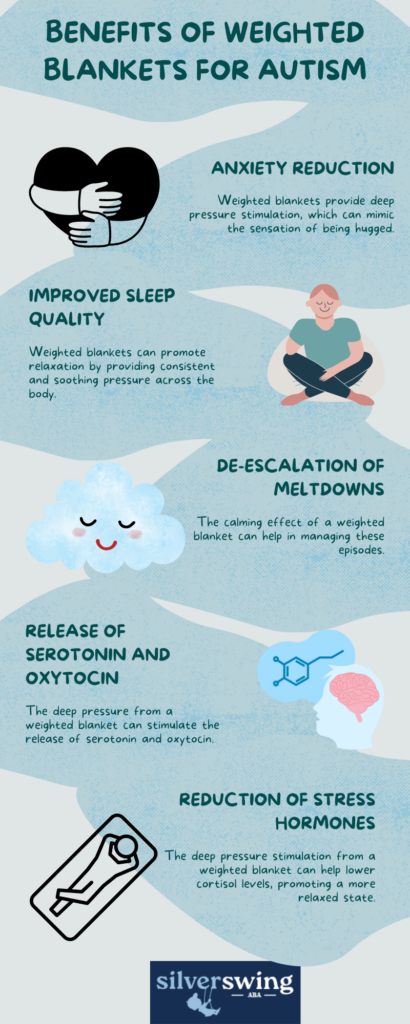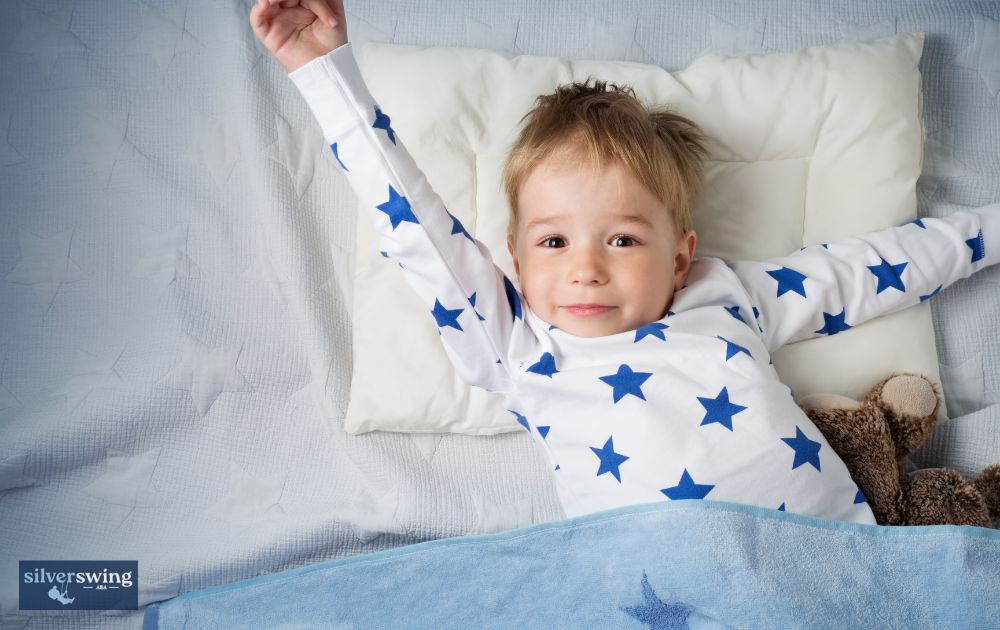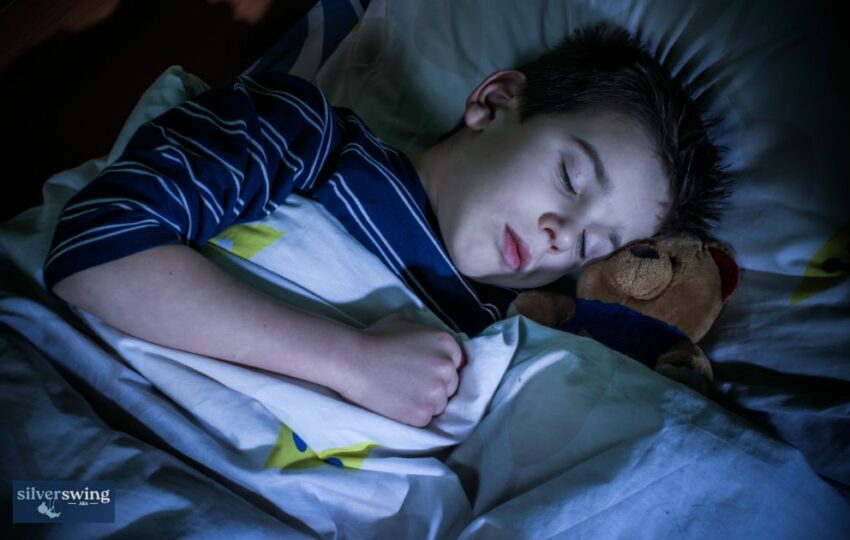Parenting an autistic child comes with unique challenges, one of which often includes managing sensory processing issues and sleep difficulties. One popular tool that has garnered attention is the weighted blanket. But do these blankets really work for autistic individuals? Let’s delve into the benefits and considerations of using a weighted blanket for autism.
Understanding Sensory Processing Disorder and Autism
Sensory Processing Disorder (SPD) is often described as a neurological issue that prevents some parts of the brain from accurately processing sensory information. This can result in:
- Discomfort with clothing
- Difficulty falling or staying asleep
- Atypical speech development
- Clumsiness
- Physical restlessness
- Decreased awareness of pain
- Discomfort with being hugged or cuddled
Many autistic individuals experience sensory processing challenges, making it difficult for them to respond appropriately to sensory input. For some, this includes a heightened need for deep-pressure tactile input, which is where weighted blankets come into play.
How Weighted Blankets Work
Weighted blankets are designed to provide deep-pressure stimulation. These blankets are filled with materials such as glass beads or cotton to add weight, mimicking the sensation of being hugged or held. This deep pressure can trigger the release of serotonin and oxytocin, hormones that promote relaxation and a sense of security.

Benefits of Weighted Blankets for Autism
Research and anecdotal evidence suggest several potential benefits of using a weighted blanket for autistic individuals, particularly children. These benefits include:
Anxiety Reduction
Weighted blankets provide deep pressure stimulation, which can mimic the sensation of being hugged. This activates the parasympathetic nervous system, which is responsible for the body’s rest response. As a result, anxiety levels can decrease, leading to a calmer state of mind. For autistic children who often experience heightened anxiety, this can be a significant benefit.
Improved Sleep Quality
Many autistic individuals struggle with sleep disorders. Weighted blankets can promote relaxation by providing consistent and soothing pressure across the body. This can help children fall asleep faster and stay asleep longer. Improved sleep quality is crucial for overall health, and for autistic children, it can also lead to better daytime functioning and reduced irritability.
De-escalation of Meltdowns and Sensory Overload
Meltdowns and sensory overloads are common in autistic individuals due to their heightened sensitivity to environmental stimuli. The calming effect of a weighted blanket can help in managing these episodes. By providing a sense of security and reducing sensory input, weighted blankets can help children regain control and de-escalate from a meltdown more quickly.
Release of Serotonin and Oxytocin
The deep pressure from a weighted blanket can stimulate the release of serotonin and oxytocin. Serotonin is a neurotransmitter that contributes to feelings of happiness, while oxytocin is often referred to as the “love hormone” because it contributes to bonding and emotional regulation. These hormones play a key role in mood regulation and emotional stability.
Reduction of Stress Hormones
High levels of cortisol, the body’s primary stress hormone, can be detrimental to both mental and physical health. The deep pressure stimulation from a weighted blanket can help lower cortisol levels, promoting a more relaxed state. This reduction in stress hormones can help mitigate chronic stress and improve overall health outcomes for autistic individuals.
Trying Deep Touch Therapy for Autism
While deep touch therapy and the use of weighted blankets can be beneficial, it’s important to approach this method thoughtfully. There are some considerations to keep in mind to ensure safety and effectiveness.
Overheating
Weighted blankets can be warm, which might not be suitable for everyone, especially those who tend to run hot or live in warmer climates. Opt for blankets made from breathable materials like cotton or bamboo.
Difficulty Moving
Some children might find it difficult to move under the weight of the blanket. Choosing a lighter-weight blanket or ensuring it’s the right size for your child can help mitigate this issue.
Allergic Reactions
If your child has sensitive skin or allergies, look for hypoallergenic blankets made from natural fibers.
Risk of Suffocation
Weighted blankets should never be used on infants or young children without supervision due to the risk of suffocation.
How to Find the Best Weighted Blanket for Autism
Choosing the best weighted blanket for autism involves careful consideration of various factors to ensure comfort, effectiveness, and durability. Here are some essential tips to help you find the perfect weighted blanket for an autistic individual.
Weight
A general rule is to select a blanket that is about 10 percent of the user’s body weight. For example, if the person weighs 60 pounds, a 6-pound blanket is ideal. Anything lighter may not provide the necessary pressure, while anything heavier could be uncomfortable.
Size
Consider the size of the bed where the blanket will be used. A blanket that fits the bed properly will provide better coverage and comfort. Additionally, if the blanket is too large, it may be cumbersome to move or wash.
Filling and Construction
Weighted blankets are filled with materials like glass beads or polyfill. Glass beads are usually quieter and provide more even weight distribution. Pay attention to how the blanket is constructed; the weight should be evenly distributed to ensure consistent pressure.
Fabric
The fabric of the blanket should match the user’s temperature preferences. For those who tend to be cold, warmer fabrics like fleece or flannel are ideal. Conversely, breathable fabrics like cotton or bamboo are better for individuals who tend to overheat.
Washing Instructions
Ensure the blanket is easy to clean. Weighted blankets can be heavy, so a machine-washable option or one with a removable cover can be very convenient. Durable fabrics that withstand frequent washing are also important.
Additional Considerations for Children
When choosing a blanket for a child, avoid overstimulating patterns. Simple, muted designs are less likely to interfere with the calming effects. Additionally, consider cost-effective options since children will outgrow their blankets.

Consulting with Professionals
To determine if a weighted blanket is beneficial, observe your child’s behavior before and after using the blanket. Take note of their sleep patterns, anxiety levels, and overall behavior to see if there is a noticeable improvement.
Ideally, an occupational therapist (OT) with sensory integration training can evaluate and treat your child. However, if professional help is not accessible or affordable, you can explore some DIY options at home.
The Takeaway
While weighted blankets may not be a one-size-fits-all solution, they offer a low-risk and potentially high-benefit option for many autistic individuals dealing with sensory processing issues and sleep difficulties. By carefully considering the needs and responses of your child, and possibly consulting with a trained professional, you can determine if a weighted blanket is a worthwhile addition to your autism support toolkit.
Sources:




